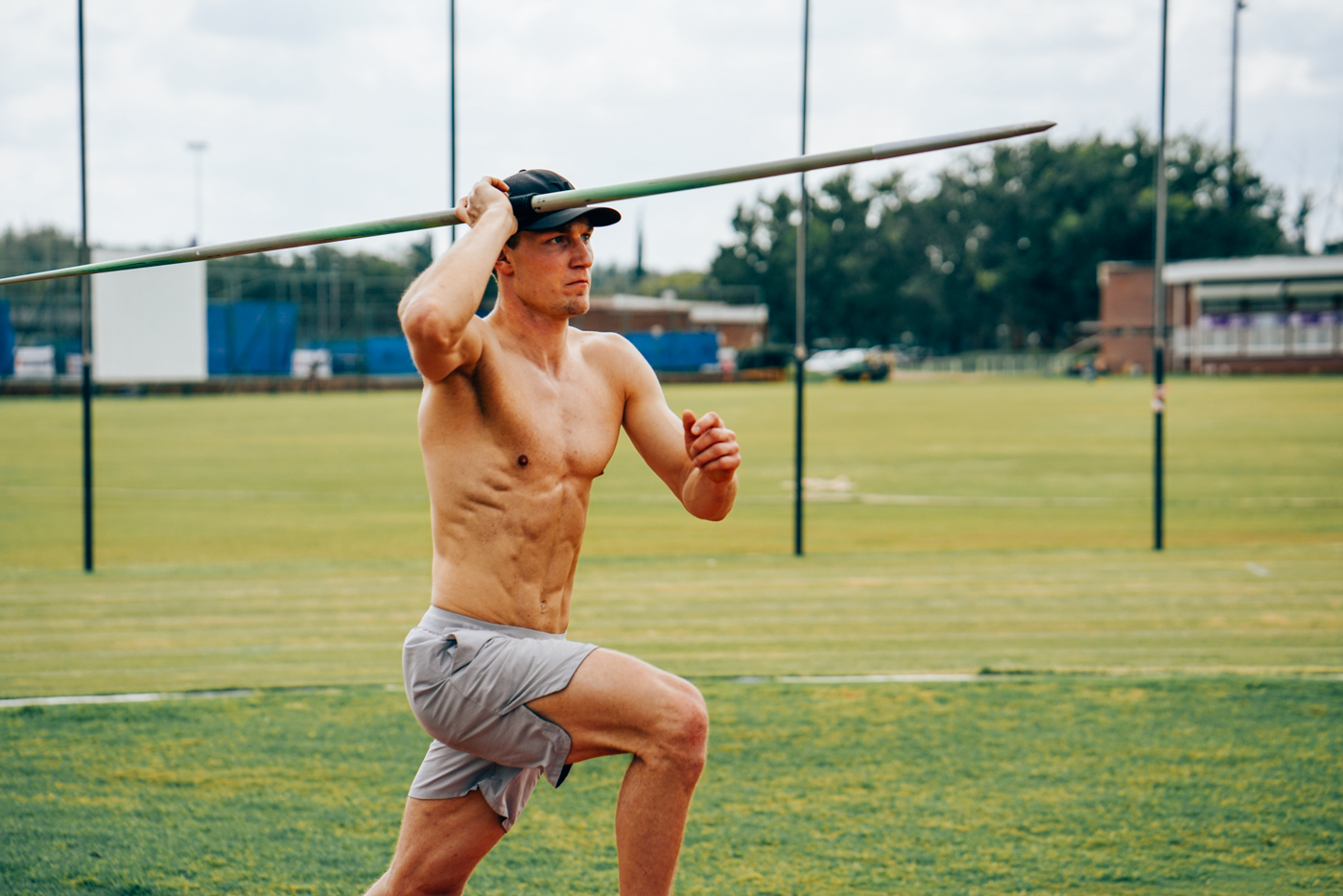بِسْمِ اللَّهِ الرَّحْمَنِ الرَّحِيم
Hello everyone 💜How are you today? Hope that you guys are doing well during this pandemic. Please follow the SOP as the case is rising. So, I'm going to talk about Shot Put. Shot put is a track and field event that involve putting (pushing rather than throwing), a heavy spherical ball as far as possible.
HISTORY:
- The homer mentions competitions of rock throwing by soldiers during Siege of Troy and there is no death records.
- But a version of the modern form of discipline can be traced to the Highland Games in Scotland during the 19th century where competitors threw a rounded cube, stone or metal weight behind a line.
- They believe the shot put originated from the ancient Celtic tradition of "putting the stone" which according to Scottish folklore, it was used by Clan Chieftains to help them identify their strongest men for battle purposes.
- The men's Shot Put has been a part of tradition in every modern Olympic since 1896.
- While women putter had to wait until 1948 before they could compete in the game.
EQUIPMENTS:
- Shots Put. [Men : 7.26 kg] [Women: 4 kg]
- Sport Shoes/Spike.
- Toe Board.
- Shot Put Circle.
- Tape Measure.
- Flags.
STYLE & PHASE OF SHOT PUT:
Standing Throw.
- One Step Slide.
- Parry O' Brian/Glide.
1) Standing Throw.
i.a) Bullet Grip
There are two types of hold the shot which are hold with three fingers and hold with five fingers.
i.b) Preparation.
Participants must standing at the front of the circle. The left shoulder facing the direction of the throw. While the bullet are place near the neck and under the ear. He /She must lift the arm almost horizontally and the elbow direction are outward.
ii) Gliding.In this style, there is no gliding technique applied.
iii) Delivery.
The right foot must be lower than left foot. Knead the waist and push with the right hand forward across the body. Simultaneously pull down the left hand and straighten your legs. The right hand in the direction of the lash, the elbows elongated outside and far from the body.
iv) Recovery.
The position of the front and back leg is same in the throwing or delivery phase.
2) One Step Slide.
i.a) Bullet Grip
There are two types of grip that can be use which are hold with three fingers and hold with five fingers.
i.b) Preparation.
Athlete must standing at front of the circle, backing up the throwing area. The bullet are placed near the neck and under ear. While the arm are lifted almost horizontally and elbow position must be outward.
ii) Gliding.
In this style, athlete need to do gliding where the weight on the left leg, the right foot is moved to the center of the circle by crossing the left leg.
iii) Delivery.
Athlete must lower down their right foot and knead the waist. After that push with the right hand forward across the body. Simultaneously pull down the left hand and straighten the legs. The right hand must be in direction of the lash and the elbow elongated outside far from the body.
iv) Recovery.
Brought the back leg to the front of the circle and at the same time the front leg is taken back.
Google Image.
3) Parry O' Brian/ Gliding.
i.a) Bullet Grip.
The grip for this style is same with the others which have two ways, hold with three fingers and five fingers.
i.b) Preparation.
In this phase, athlete need to stand in front of the circle and backing up the throwig area. The left shoulder facing the direction of the throw and bullet must be placed near the neck and under the ears. While arm lifted almost horizontally and elbows outward.
ii) Gliding.
Gliding phase are needed where athlete must inclined the body, the right leg is bent and the left leg is kicked to the front of the circle. The right foot are moving to the center of circle.
iii) Delivery.
Athlete need to lower their right foot, knead the waist and push the shot with right hand forward across the body. Simultaneously pull down the left hand and straighten the leg. Right hand in the direction of the lash and elbow elongated outside and far from the body.
iv) Recovery.
After that, the back leg must be brought to the fron of the circle and at the same time the front leg is taken back.
Google Image.
RULES & REGULATIONS:
💥 Upon calling the athlete's name, they have 60 seconds to commence the throwing motion.
💥 Athlete may not wear gloves just taping the fingers.
💥 Must rest the shot close to the neck and keep it tight to the neck throughout the motion.
💥 The shot must be released above the height of the shoulder by using one hand. Cannot throw overhead motion.
💥 Athlete may touch the inside surface of the circle or stop board, but they cannot touch the top or outside of it.
💥 The shot must be land in the legal sector of the throwing area.
💥 The athlete must exit the throwing circle from the back half of the circle.
Yeay..... We're done with the Shot Put. I hope you guys understand on what I'm delivering. See you soon on the new topic. 😘



























/high-jumper-98164863-59f32cec22fa3a001184037d.jpg)















